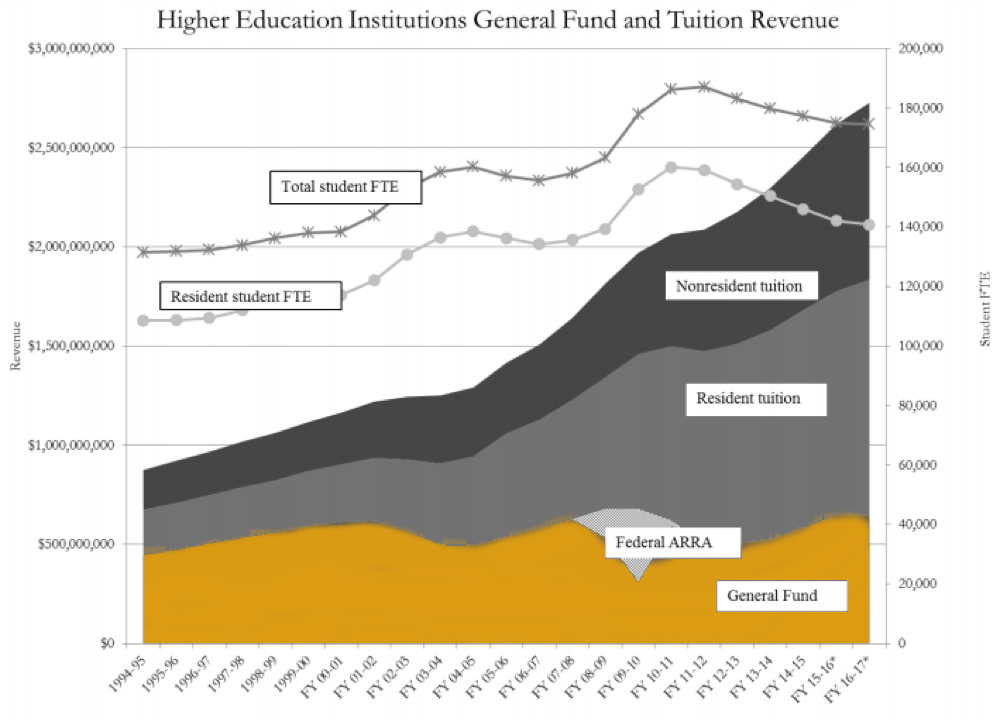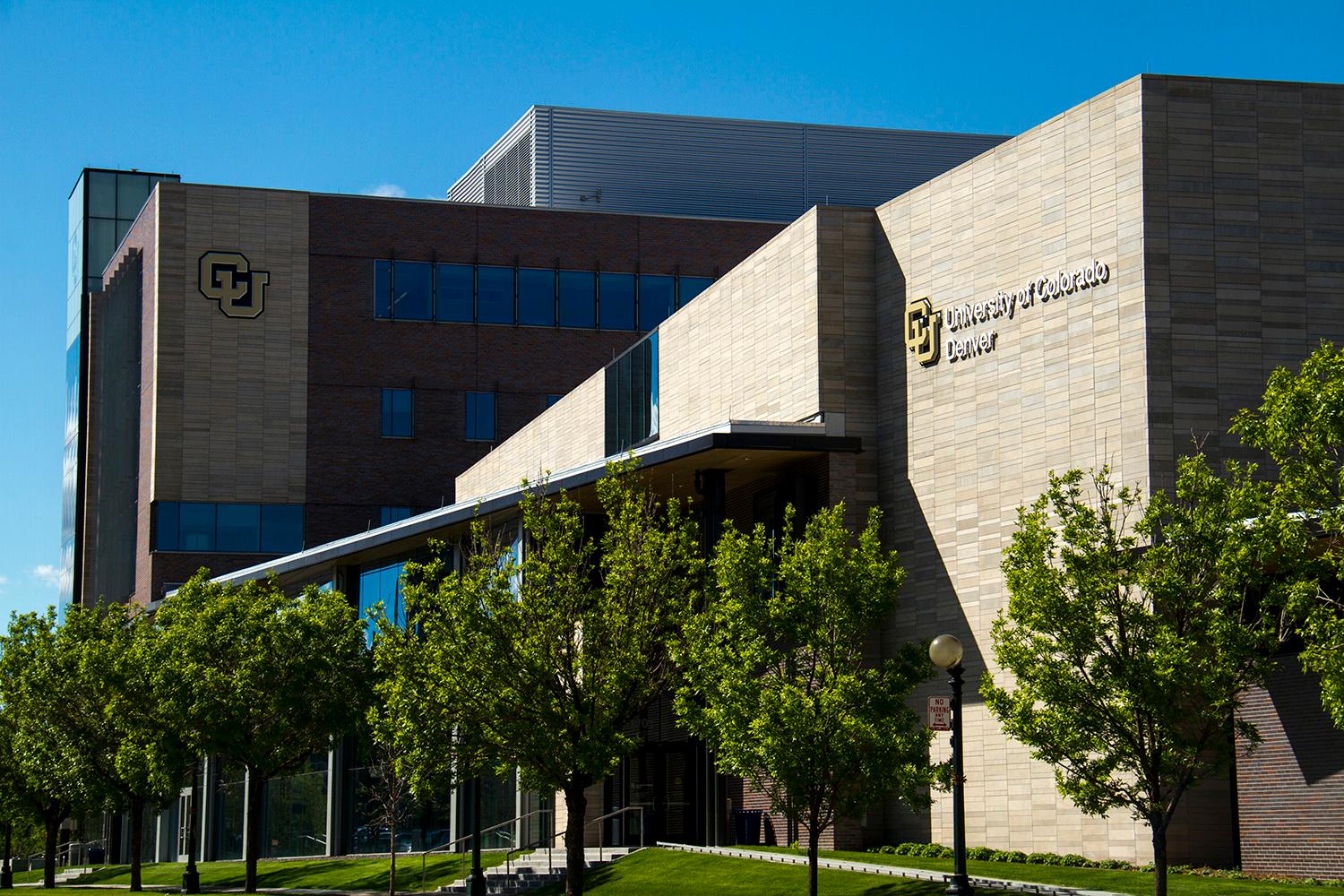Tuition at Colorado's largest schools have doubled since 2000, ranking among the largest increases in the country.
"Bloated" administrations and extravagant amenities often get the blame, but economics professor Doug Webber made the case in FiveThirtyEight this week that a central cause is a lack of funding from taxpayers and state governments.
FiveThirtyEight's analysis of schools across the nation found that Colorado had the greatest rate of increase in tuition, and the highest average tuition, from 2000 to 2014. However, the analysis excluded CU-Boulder, along with roughly 5 percent of four-year public schools nationwide, so it's not a bulletproof ranking.
It's also worth noting that Webber's analysis averages together what all students are paying, not just in-staters.
When you're looking only at in-state tuition, Colorado is the 22nd most expensive state, according to College Board data from 2015. Still, that in-state figure is increasing relatively quickly -- 26 percent over just five years, which was the fourth-fastest increase for in-state tuition in the nation, College Board found.
All that being said, let's dig a little deeper into what's driving these tuition hikes in Colorado.
ENHANCE.

This chart, from the state's most recent budget, shows exactly how it played out. You can see that funding has increased over the last few years, but we're still not caught up to 2006 levels – and we're significantly lower than the 1990s, when spending passed $1 billion. (That's adjusted for inflation.)
"Limited state funds and the ability to increase tuition have, together, pushed Colorado and other states toward a funding model in which the share of higher education costs borne by individuals and families has increased dramatically," this year's budget notes.
Here, this chart shows it even better. It's a little janky because I colored it in myself, but the point is that the yellow part shows how much the government is spending, while practically everything else comes from student tuition.

Also worth noting: Enrollment in Colorado's public institutions has dropped every year since 2011, especially for residents of the state. State economists say this is because more students have found jobs as the economy has recovered.
Here's how tuitions have changed at specific schools.

No, financial aid hasn't covered the bill.
The state has significantly increased the amount it gives out in financial aid (for example, the amount increased by 37 percent in 2014-15), but tuition has increased way faster.
Basically, the state is collecting way more money than it is giving back out as financial aid, compared to the '90s. Note that this is only for state financial aid.
But why did spending drop?
Well, let's first note that state spending on higher education actually stayed stable from last budget year to this one. The governor's proposed budget threatened a cut to higher education, but the final deal kept things largely as they were.
Still, as noted above, we're way below the 1990s, and it's an indirect effect of TABOR, the Taxpayer's Bill of Rights. TABOR, passed in 1992, sets pretty strict limits on how much government spending can increase per year, and it also requires the state to get voter approval for any tax increases.
To get around that, the state has split off a lot of its functions, including higher education, into "enterprise funds." Enterprise funds work like businesses, covering a lot of their own costs through fees. In the case of higher ed, that means tuition.
Meanwhile, the remaining state functions, like K-12 education, prisons and health care take up more and more of the regular budget. With limited ability to bring in more revenue, there isn't a lot of money left for higher education -- and that's why a booming economy hasn't done much for some of Colorado's schools.
Correction: This article has been updated throughout to reflect limitations of the data being discussed. The rankings produced by FiveThirtyEight did not include several of Colorado's public institutions. Therefore, the data was not complete enough to support our original claim that Colorado has the highest average tuition in the country.













